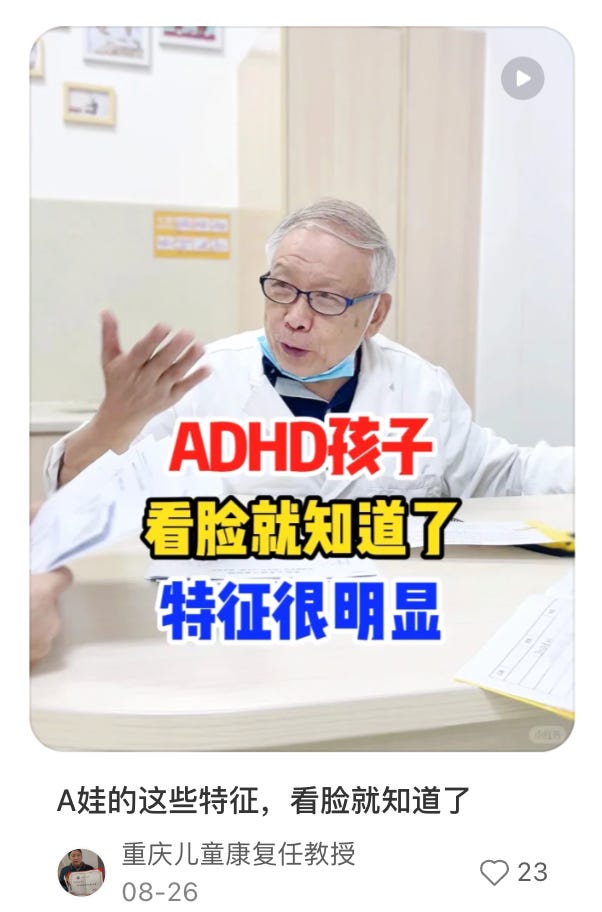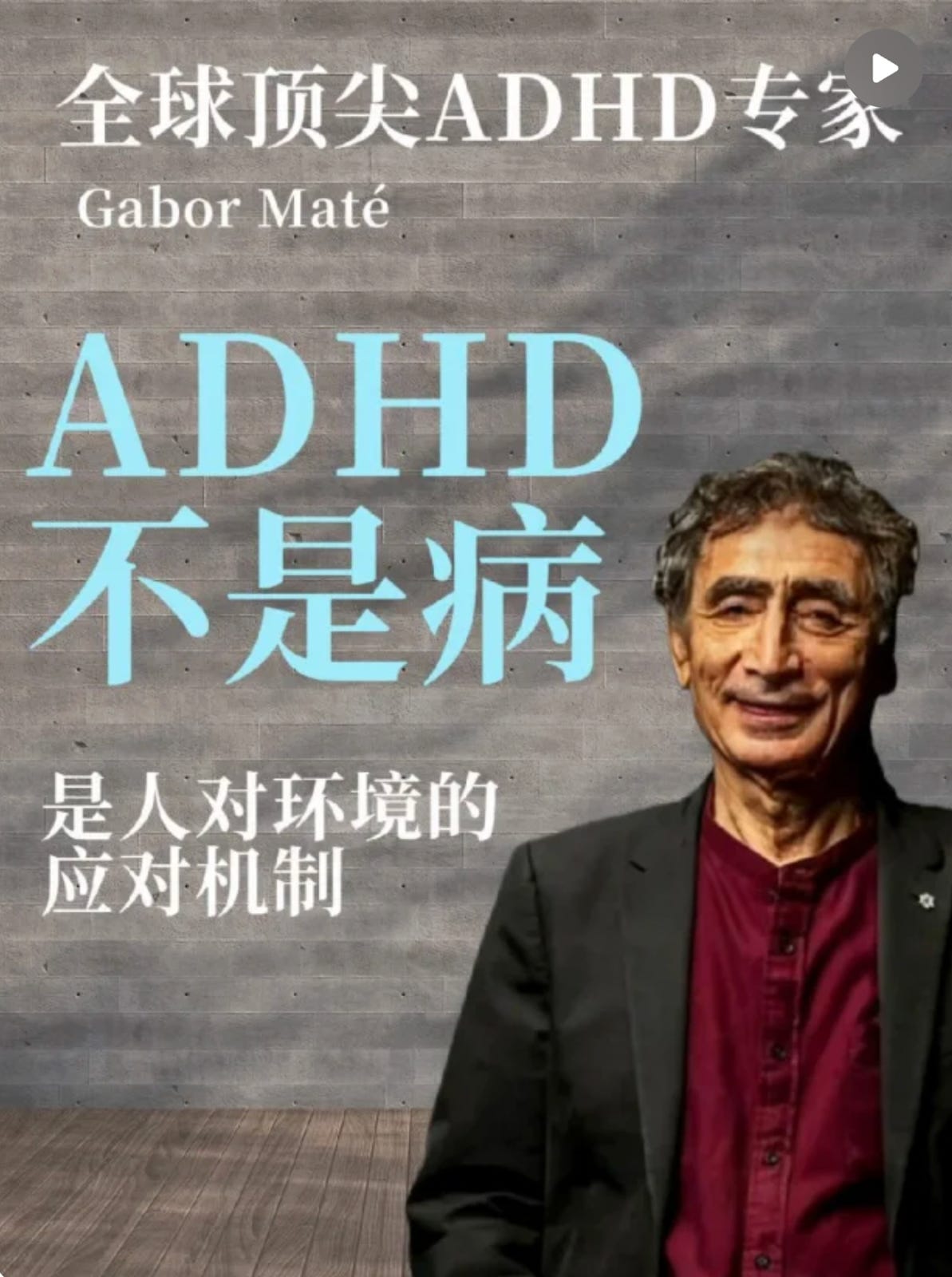Red Note Signals #1: China’s New Way of Coping with Anxiety: Self-Diagnosed ADHD
Inaugural piece focuses on mental health and the wave of people informally “diagnosing” themselves with ADHD on Red Note
This is a new series I’m working on with
that we’re calling Red Note Signals. Red Note, in our mind, is a microcosm of consumption trends and societal sentiment, and a pretty good early read on what’s coming next. We’re treating it less as a lifestyle app and more as a live archive of how China is spending, aspiring, and coping. The topics and trends we spot there are worth dissecting.Our inaugural piece focuses on mental health and the wave of people informally “diagnosing” themselves with ADHD on Red Note. It’s not that different from the old habit of cross-checking every rash on WebMD—and now asking ChatGPT about every symptom—but it points to something larger. As the outside world feels stagnant, this becomes an extension of the logic of 躺平 (“lying flat”) by turning inward: if you can’t move the system, you start scanning and reinterpreting yourself, trying to make peace with what you can’t change.
For an older generation in China, anxiety didn’t really have a psychological vocabulary; it was something you absorbed, carried, and called “real life.” On Red Note, that same unease gets labeled, broken into symptoms, turned into aesthetics, and pushed into the feed. It’s the “anxious generation” narrative Jonathan Haidt writes about, but adapted to China—shaped by family expectations, the long grinding slowdown of the Chinese economy, and how people are coping. Red Note is simply where it surfaces first, and where we get to watch it evolve in real time.
China’s New Way of Coping with Anxiety: Self-Diagnosed ADHD
On Chinese social media these days, ADHD and bipolar disorder have drifted from medical jargon into the vocabulary of self-identity.
People aren’t just “cyber diagnosing” themselves. They’re diagnosing their parents.
In the past few months, I’ve heard some version of this at least three times from different friends:
“After going home and observing my mom for a week, I’m like 90% sure she’s bipolar (or ADHD). All my childhood trauma finally makes sense.”
This wave of self-pathologizing is the newest hotspot in China’s ongoing pop-psychology boom. The last big trend was avoidant personality disorder. Before that, it was MBTI.
This whole phenomenon signals how deeply psychology has permeated China’s popular culture. From early bestsellers like The Enneagram and The Courage to Be Disliked. Then came several rounds of pop-psychology booms across podcasts, short videos, and public-intellectual talk shows. Later, after China’s biggest stand-up show was taken down for political jokes, its star Li Dan reemerged on Xiaohongshu, running therapy-like livestreams where callers often begin with, “Well, it’s my toxic family issues…”
Psychology quickly moved from fostering independent, self-aware individuals in a society shaped by collective norms to becoming a kind of currency in the online content economy: zodiac signs, 16 personalities, avoidant attachment, now the ADHD craze. This change reflects more than just a hunger for the latest trending concept; it also exposes how social moods are evolving.
And it’s not just China. A 2024 survey in the U.S. found that 72% of Gen Z girls said that “mental health challenges are an important part of my identity.”

The easy explanation is that we’re living through an era of unprecedented attention slaughter. Our focus is shredded by notifications, by work chats pinging at random, by the endless scrolling. Our brains have been retrained for hopscotch reading and skim-surfing thinking. No wonder everyone feels like they have ADHD.

Of course, there’s serious online discussion about medication and proper treatment. One trending Xiaohongshu post features a clip from U.S. psychology expert Gabor Maté’s appearance on the Joe Rogan show, where he argues that immediately prescribing medication to someone with ADHD is often the wrong approach.
A Wall Street Journal analysis of Medicaid data from 2019 to 2023 shows a similar concern: among U.S. children prescribed ADHD medication, one in five later ended up taking additional psychiatric drugs to manage the side effects. Just 37% had behavioral therapy beforehand, largely because it’s so hard to access.
Maté suggests that ADHD isn’t a disease, but an adaptive mechanism. Infants, for example, often appear restless, inattentive, or hyperactive under stress, such as during parental conflict. They can’t fight or flee, so their “distraction” is a coping mechanism: they simply disconnect.
And that brings me to what I really want to discuss.
Beyond the attention economy, there are larger structural forces at play — an increasingly high-pressure political environment, rising unemployment, anxieties about an aging society. Yet these are questions we rarely confront.
So instead, we turn inward, reducing every feeling to a diagnosis, even for issues like romantic dead-ends. On Xiaohongshu, posts frame cheating or serially fickle behavior as ADHD. People even ask which “partner type” is best for someone with ADHD, instead of asking the deeper questions: Why can’t I imagine a future anymore? Why does long-term stability feel impossible? Why does everything collapse into living only in the immediate present?
In a heavily moderated environment — where activism is discouraged, and public-interest voices risk consequences — talking about collective issues feels unsafe and often futile. It’s easier to retreat into the smallest, safest psychological space possible.
In a way, maybe we’re all avoidant now.
Treating every trait as a symptom of a disorder may well be the best coping mechanism.
But can we truly face ourselves if we refuse to face the world shaping us?
Perhaps, for now, living as an “ADHD person” is the most comfortable way to survive in this environment.




